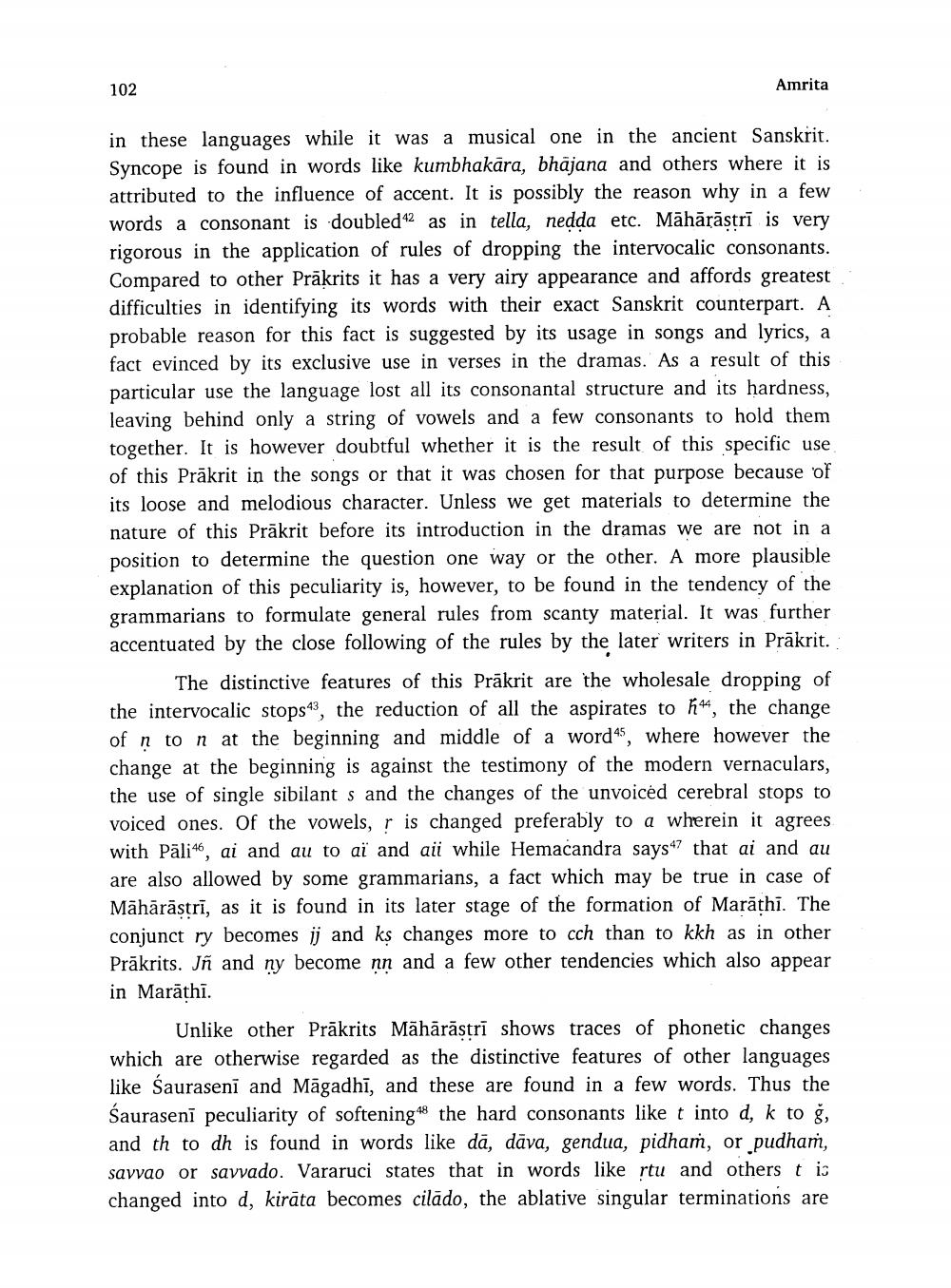________________
102
Amrita
in these languages while it was a musical one in the ancient Sanskrit. Syncope is found in words like kumbhakāra, bhājana and others where it is attributed to the influence of accent. It is possibly the reason why in a few words a consonant is doubled 42 as in tella, nedda etc. Māhārāstrī is very rigorous in the application of rules of dropping the intervocalic consonants. Compared to other Prākrits it has a very airy appearance and affords greatest difficulties in identifying its words with their exact Sanskrit counterpart. A probable reason for this fact is suggested by its usage in songs and lyrics, a fact evinced by its exclusive use in verses in the dramas. As a result of this particular use the language lost all its consonantal structure and its hardness, leaving behind only a string of vowels and a few consonants to hold them together. It is however doubtful whether it is the result of this specific use of this Prākrit in the songs or that it was chosen for that purpose because of its loose and melodious character. Unless we get materials to determine the nature of this Prākrit before its introduction in the dramas we are not in a position to determine the question one way or the other. A more plausible explanation of this peculiarity is, however, to be found in the tendency of the grammarians to formulate general rules from scanty material. It was further accentuated by the close following of the rules by the later writers in Prākrit.
The distinctive features of this Prākrit are the wholesale dropping of the intervocalic stops43, the reduction of all the aspirates to h44, the change of n to n at the beginning and middle of a word45, where however the change at the beginning is against the testimony of the modern vernaculars, the use of single sibilant s and the changes of the unvoiced cerebral stops to voiced ones. Of the vowels, r is changed preferably to a wherein it agrees with Pāli 46, ai and au to aï and aii while Hemacandra says47 that ai and au are also allowed by some grammarians, a fact which may be true in case of Māhārāstrī, as it is found in its later stage of the formation of Marathi. The conjunct ry becomes ij and ks changes more to cch than to kkh as in other Prākrits. Jñ and ny become nn and a few other tendencies which also appear in Marāthī.
Unlike other Prākrits Māhārāstrī shows traces of phonetic changes which are otherwise regarded as the distinctive features of other languages like Sauraseni and Māgadhī, and these are found in a few words. Thus the Sauraseni peculiarity of softening 48 the hard consonants like t into d, k to ğ, and th to dh is found in words like dā, dāva, gendua, pidham, or pudham, savvao or savvado. Vararuci states that in words like rtu and others t is changed into d, kirāta becomes cilādo, the ablative singular terminations are




